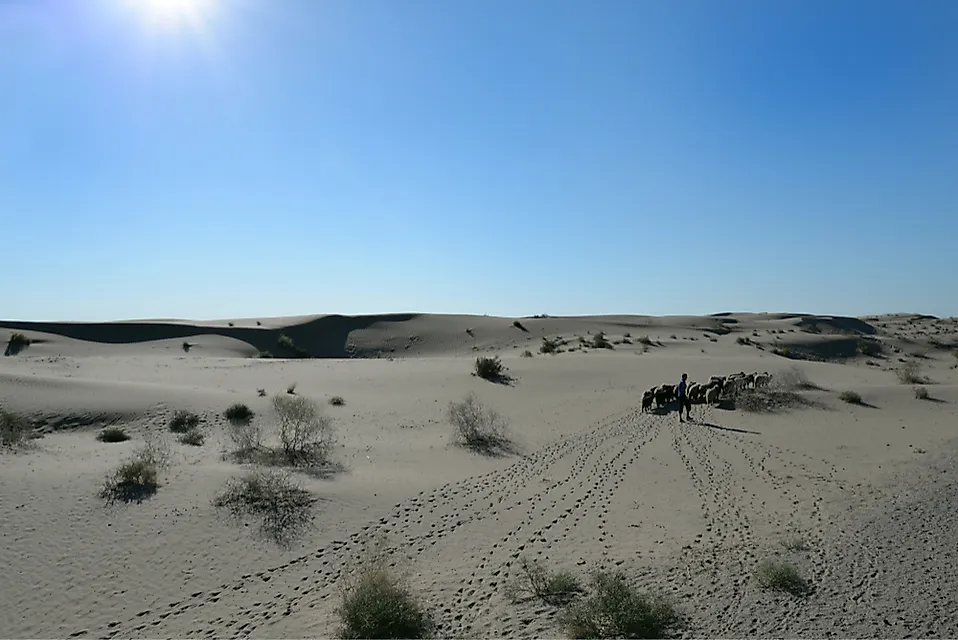Where Is the Karakum Desert?

Location and Description
The Karakum Desert is a desert located in Central Asia. The word “Karakum” translates to “Black Sand” in Turkic languages, and the name refers to the dark soil found below the sandy surface of the desert. The desert covers about 70% or 135,000 square miles of Turkmenistan. The desert measures around 500 miles from east to west, and 300 from north to south.
The desert is situated east of the Caspian Sea, while the Sarykamysh Basin and Aral Sea and located to the north. The northeast corner of the desert is bound by the Kyzyl Desert and the Amu Darya River, while the southeast is bordered by the Badkhyz steppe region and the Garabil uplands. The recent shrinking of the Aral Sea has exposed an expanse of land that is now known as the Aral Karakum, and is an extension of the main Karakum Desert. The Aral Karakum covers around 15,440 square miles. The Darvaza Gas Crater, also known as the “Gates of Hell” or the “Door to Hell,” is located in the main Karakum Desert.
Habitat
Plant life the Karakum Desert is relatively diverse and consists of several species of grass, small shrubs, trees, and bushes, such as saltwort, Astragalus, and Calligonum. Ephemeral plants, which are eaten by animals, are plentiful during the humid early spring season. Other parts of the desert are covered by wormwood shrub and tree species such as the Ammodendron conollyi. Regions with water deep underground have plant species like white saxaul, while those with water close to the surface have plants like black saxaul.
Animal life is not very diverse and includes insects such as ants, beetles, termites, ticks, spiders, dung beetles, and darkling beetles. Lizards, turtles, and snakes also live in the Karakum. Bird species include sparrows, skylarks, desert sparrows, and other species, while rodents include jerboas and gophers. The tolai hare, barchans cat, goitered gazelle, corsac fox are examples of mammal species in the Karakum Desert.
Economy
The local populace has come up with several ways to sustain life in the desert. Modern irrigation techniques have made it possible for people to practice both plant and animal farming actively. Examples of animal species reared include the Karakul sheep. Water is readily available from the Karakum Canal for everyday use. Some of the commodities grown include fodder crops, fine-fibred cotton, fruits, and vegetables.
Tourism is another activity that contributes to the economy in the Karakum Desert area. For example, the Gates of Hell is a unique feature. Officially known as the Darvaza gas crater, the crater is full of natural gas that has been on fire since 1971, and attracts people all around the world. There have also been extensive advancements in the exploration of oil and natural gas.











